Cmon, publishing and writing about an Only Fans and TikTok user is tabloid news. Its junk news, not up to…
Monday Morning Update 6/17/13
Three-quarters of poll respondents don’t believe EHR vendors should sell the de-identified data of patients who haven’t approved that practice. New (reader-suggested) poll to your right: what will be the effect(s) of the EHR Developer Code of Conduct? You may choose more than one answer and add your comments after voting.
Fans of the smoking doc HIStalk logo will like the old-new mash-up done by the folks at Billian’s HealthDATA. Inga and I think it’s pretty cool.
Welcome to new HIStalk Platinum Sponsor O’Reilly Strata Rx Conference, which runs September 25-27 at Boston Marriott Copley Place. It focuses on improving healthcare by acquiring, analyzing, and applying big data (the conference tagline is “Data Makes a Difference.”) Presenters include Jonathan Bush of athenahealth; James M. Maisel, MD of ZyDoc; Richard Elmore of Allscripts; Jordan Shlain of Healthloop; Dale Sanders of Health Catalyst; and Michael Weintraub of Humedica. Fun events include speed networking, a startup showcase, and a five-minute presentation track. Use code HIST by August 15 and you’ll get 20 percent off on your registration, which ranges from $645 for Wednesday only to $1,925 for a three-day, all-access pass. Thanks to O’Reilly Strata Rx Conference for supporting HIStalk. I’m looking for interesting fall and winter conferences to attend if I can find the time and this one looks like a contender.
Speaking of HIMSS EHRA’s Developer Code of Conduct, its website doesn’t indicate which vendors have signed it, but Epic has, according to its site.
Mediware will announce Monday that it has acquired Fastrack Healthcare Systems, which will add home medical equipment systems to Mediware’s Alternate Care Solutions business.
Another acquisition will be announced Monday afternoon involving two physician practice system vendors, but I’m non-disclosed on that one.
Here’s a pretty funny video of athenahealth’s Jonathan Bush in a fake screen test (aka an athenahealth pitch) for Health Datapalooza.
From an AAFP interview with Farzad Mostashari: “I think that [physician EHR dissatisfaction] number may grow, because as we expand beyond the early adopters, the expectations for usable and intuitive technology are higher. I sure hope that the EHR vendors are hearing the same levels of dissatisfaction from their customers and their prospective customers that I’m hearing. I hope vendors are focusing on user-centered design in the next iterations of their software instead of adding more bells and whistles.”
Passport announces CareCertainty and PatientSync, which provide real-time notifications of care transitions for population health management.
An article in the Madison newspaper provides a factoid about the brick building at 2020 Old University Road in Madison: it was the birthplace of both Epic and American Girl.
David LeClair, one of 140 athenahealth employees bicycling an 180-mile route from Maine to Massachusetts in the Trek Across Maine fundraiser for the American Lung Association, was killed Friday by a passing tractor trailer. He was 23.
Lucile Packard Children’s Hospital at Stanford notifies 12,900 patients that their information was present on a broken, unencrypted laptop that was stolen in May.
Among the 11 medical schools earning a $1 million AMA grant for education innovation are New York University and Indiana University, which will develop a virtual EHR using de-identified patient data to each students how to manage population health.
Winner of ONC’s Family Caregivers Video Challenge is “Grandma Safe and Sound,” in which Rachel Rust describes using Independa Angela, a tablet- and TV-based system that gives users video chat, e-mail, health information, schedules, reminders, and photo sharing, to help care for her 91-year-old grandmother. The announcement was six months ago, but I hadn’t seen it until ONC tweeted it.
AMIA launches a Student Design Challenge to re-invent electronic clinical documentation to reduce clinician burden, improve decision-making, encourage teamwork, and support reuse of the captured data. Graduate student team entries are due July 31.
An interesting blog post by Barbara Bronson Gray, RN wonders why we someone doesn’t offer a Genius Bar for everyday health issues. The obvious answer: Apple charges a premium for its products and can therefore afford to spend money improving user satisfaction at no charge, while in healthcare someone would have to be paid to provide services for free. It would be nice for hospital EDs, though.
A Harvard Law symposium contribution on the re-identification of genomic data sets cautions hype-happy newspapers and blogs to understand and accurately portray what they’re writing about, concluding, “… while this recent re-identification demonstration provided some important warning signals for future potential health privacy concerns, it was not likely to have been implemented by anyone other than an academic re-identification scientist; nor would it have been nearly so successful if it had not carefully selected targets who were particularly susceptible for re-identification.” It doesn’t mention similar recent articles describing re-identification of health information for accident victims by matching their records to newspaper accounts, but the conclusion might be similar.
Surgeon and mHealth innovator Rafael Grossman, MD, FACS describes his experience with Google Glass and his ideas for developing medical applications for it. Examples: sharing live OR video, distance education, telemedicine, surgical back-up, and viewing EMR data without being distracted. He calls on the American College of Surgeons to lead the way in using Glass to improve healthcare.
A Dallas newspaper article profiles Vivify Health (mobile apps for patient engagement and population health management) and Axxess (home health agency software.)
England’s National Audit Office finds that the now-defunct NHS National Programme for IT (NPfIT) cost a lot more than the benefits it delivered, and it’s doubtful it will ever pay for itself although estimation is difficult because of uncertainty. Three significant programs (Summary Care Record and the South and London programs) have delivered only two percent of the expected benefits.
Here’s Part 2 of Vince’s HIS-tory of Epic.
Contacts
Mr. H, Inga, Dr. Jayne, Dr. Gregg, Lt. Dan, Dr. Travis.
More news: HIStalk Practice, HIStalk Connect.


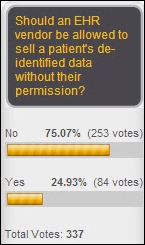


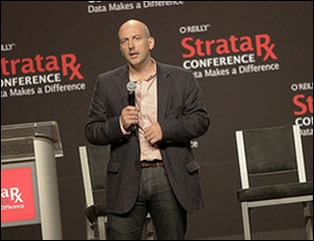




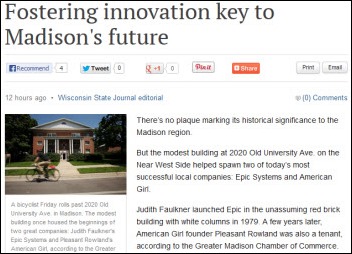

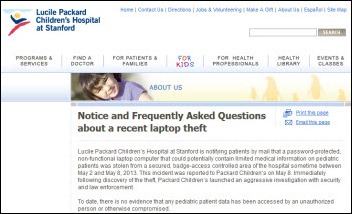



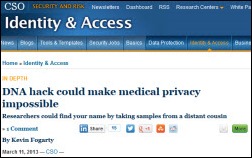
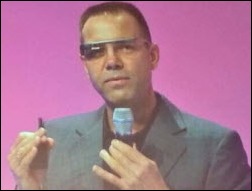
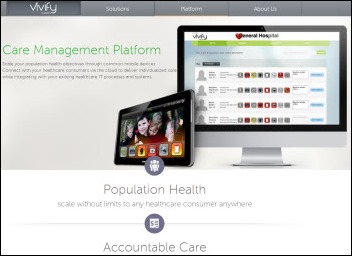
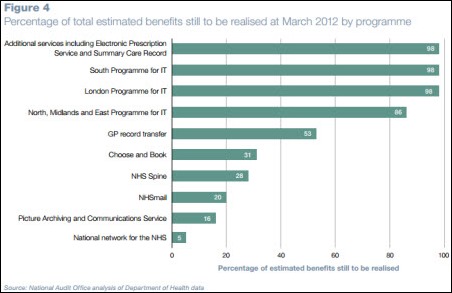

Condolences to David LeClair’s family, friends, and athenahealth colleagues. How sad, especially when trying to do something so good.
Highs & Lows: Really happy you like the logo mash-up (and appreciate the extra exposure!), but so sad to read about the LeClair tragedy 🙁 Feel like I should go donate to continue his cause!
The EHR vendors in EHRA couldn’t agree to have a list of EHR vendors who have committed to the code. I can’t imagine why some wouldn’t want a list. I guess some don’t want to be held accountable for the code or compared to how others adopt the code. Although, their salespeople will certainly be happy to say that they follow the code. Reminds me of the early days of EHR certification (pre-MU).
I think that is the first time in a long time the I’ve seen Jonathan speak without four letter words flying and disparaging diatribes about Judy and EPIC coming out of his mouth.
Vince, on slide 10, Judy suggests that “to show her gratitude (to MEDITECH), she focused on larger facilities.”
Did she also mention that another reason small facilities are not going with Epic is Epic is double the price of MEDITECH in ongoing cost?
EHR vendors have to find a new revenue stream like selling data because the business model of selling their software is no longer sustainable.
Not only are they selling it but they’re selling and reselling it.
Look to state HIE’s as the “data vendors” real soon. They too have no sustainable business model but they have the IT infrastructure (paid by you and me), seed money, and the real asset … The data!
EMR’s are so yesterday.
RE: Dr. M….. I hope vendors are focusing on user-centered design in the next iterations of their software instead of adding more bells and whistles.”
Hey Doc, if you think you can change a mission critical system from non-user centered design to UC design in a realse or two, guess again. As one who has designed and built several systems I can tell you that if UCD is not part of the initial design (and that’s true for almost all the your legacy systems today) it can’t be done in one, or a dozen iterations. So if you expect that in Stage 3 or 4 or 5 to see it at the core of the application…keep dreaming.
Best you’ll see is some nice bells and whistles that pick up oieces of UCD.